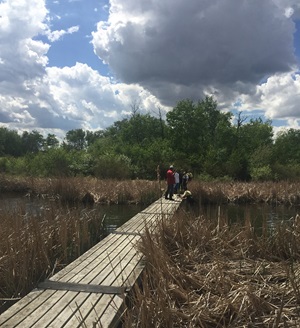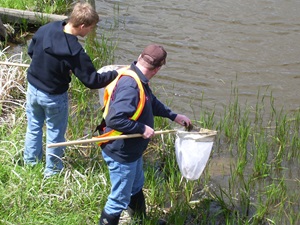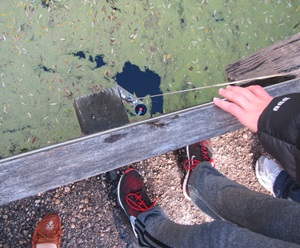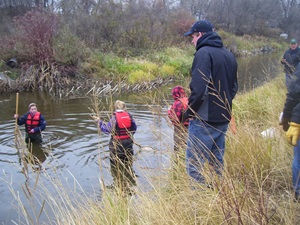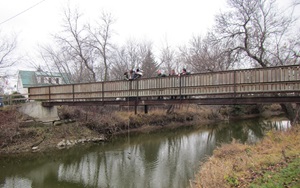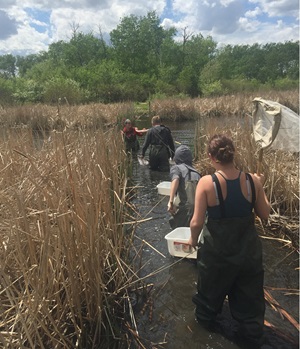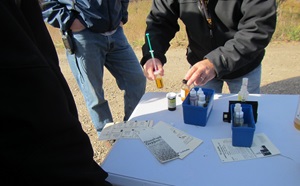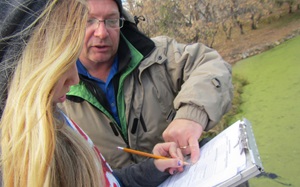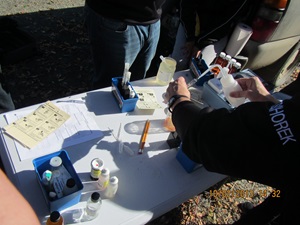South Central Eco Institute a ‘watchful’ protector for Manitoba
How the Enbridge Riverwatch program is pushing borders for improved watershed care
Picture the sizable province of Manitoba spilt into 18 puzzle pieces, whose edges are the borders of a watershed. Now, picture nine of those pieces—that’s half the province—colored in.
That’s the impressive reach of one watershed management program that’s truly making waves in Manitoba.
Logistically speaking, these puzzle pieces are known as conservation districts. And the Enbridge Riverwatch program, with its dynamic educational component, has steadily expanded its influence for nearly a decade.
“Between 2009, when we first started this thing, to now, we’ve seen the program’s involvement jump from three conservation districts to seven,” says Kent Lewarne, project manager of South Central Eco Institute, and the self-proclaimed “boots on the ground” guy.
“It just keeps getting bigger.”
The Riverwatch program, a collaboration between Enbridge and Manitoba-based South Central Eco Institute (SCEI), was established in 2011 to promote education for students in Grades 5 through 12 around the province’s main watershed of Lake Winnipeg.
“Ongoing funding allows us to offer the program at no cost to the end users—the schools and, ultimately, the students. On an average year we now have anywhere between 30 and 40 schools participating,” says Lewarne.
So what is actually involved in the art of “Riverwatch”-ing?
Using a kit of industry-grade field testing equipment that conservation districts purchase through SCEI, students collect and analyze water samples—for dissolved oxygen, pH, conductivity, temperature, and other parameters—from across the Lake Winnipeg basin.
Image gallery: South Central Eco Institute's Riverwatch
Following that initial purchase, all equipment, maintenance and restocking of chemicals is covered by Enbridge Riverwatch.
“The students’ data is published on our website, and I can see that it motivates them to make sure they are getting it right,” says Lewarne.
“Ultimately, the program teaches students the importance of our water resources—both surface and ground water—as well as our sustainable use of those resources, and maintaining the quality of supply,” he adds.
Since the inception of this partnership in 2011, Enbridge has donated $47,500 annually to support the Riverwatch program. To date, the total spend on the program has been $332,500 as part of Enbridge’s continued investment in Manitoba, which includes the Line 3 Replacement Program along our mainline right-of-way.
In the future, Lewarne says he wants to see the program get better, rather than bigger. Success can be measured by a number of standards, and he is keen to answer the question of where the program can apply the data it is collecting.
“We see students that come out for the program not even knowing the name of the river they’re at, and by the end of the day they have an understanding of the whole Lake Winnipeg watershed,” says Lewarne. “There are so many connections to be made.”
Those connections can often lead to a career in conservation. Lewarne says the program intentionally connects students with professionals in the industry, which may eventually lead to students becoming conservation district managers.
“Watching kids engaged in the science and the learning—it’s a feeling you can’t beat,” says Lewarne.
Ongoing tax revenue, local/regional economic stimulation, community investment, and workforce salary.




